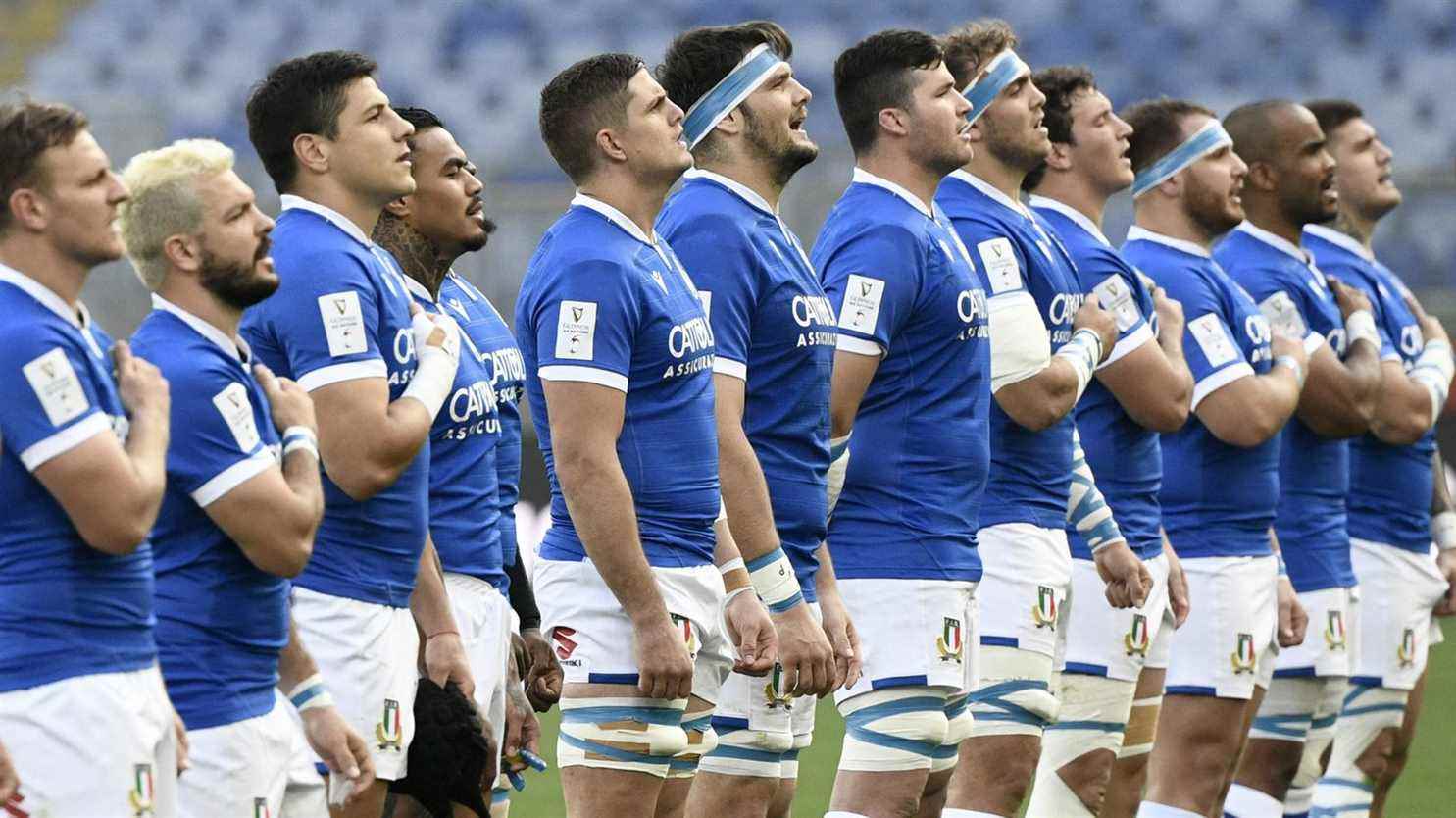Let’s get rid of the angry figures right away. Before starting its Six Nations Tournament against the XV of France, Sunday February 6, Italy has not signed a single victory in the competition since February 28, 2015 (22-19 victory in Scotland). In total, 32 consecutive defeats, and negative records in spades.
Basically, Italy is a bit like that pupil that we all knew in class (that we were even, perhaps): the bottom of the class, subscribed to the last places and the worst grades, but not a dunce though. More like a worker, laborious, he logs like crazy, accumulates private teachers… but continues to fail.
For six years, playing against the Squadra azzura has certainly allowed you to glean five points and not finish in last position in the tournament. A rather favorable fate for the five other nations, but which the Italians refuse to undergo. For several seasons, a national rugby plan has been launched to reverse the curve and send the debate on the legitimacy of its presence in the Tournament to hell (since 2000). To overcome evil, Italy relies on a triptych: power to the youth, confidence in its provinces, naturalization of many talents from elsewhere.
The rare good news from Italian rugby generally goes by the wayside, such as that of June 19, 2021. On that day, Benetton Treviso, one of the two Italian representatives, with Zebre (Parma) engaged in the United Rugby Championship (club championship which includes Welsh, Scottish, Irish and South African clubs), won the first title of a transalpine nation. “It’s no secret that Benetton performed quite well in the URC, winning the last Rainbow Cup and still being in contention for the play-offs this year.” recalls Marzio Innocenti, the president of the Italian Rugby Federation since 2021.

The feat, unprecedented, was finally little commented outside the boot. Yet it serves as the consecration of an approach driven since 2010 by Italian rugby. Participation in this international championship has enabled the two clubs to distance themselves from the domestic competition, which is considered to be rather weak, in order to be able to challenge the best European teams and players who fill the ranks of the British selections each week. An inspiring model for the thinking heads of Italian rugby who applied it in a “copy and paste” way. Seventeen players from Benetton Trévise and three from Zebre will be on the pitch at the Stade de France on Sunday.
Since the second half of the 2010s, the Federation has also started its business of naturalizing foreign players playing at Benetton Treviso. The idea is simple: to attract players to the northern city who are not or no longer selectable with their nation in order to enable them to become an Italian international in three years.
Thus, six naturalized players will represent Italy on Sunday: Toa Halafihi (born in New Zealand), the scorer Montanna Ioane (Australia), Juan Ignacio Brex (Argentina) or the substitutes Epalahame Faiva (New Zealand), Ivan Nemer ( Argentina) and Callum Braley (UK). All arrived between 2015 and 2020 in an Italian team, first in Pro 10 then at Benetton Treviso or Zebre. Some, like Brex, even wore the jersey of another selection before donning the Italian warm-up blue. Not selected to face France, David Sisi and Braam Steyn complete this list.
Il XV in campo domenica 6/2 per il primo turno del @SixNationsRugby 2022 ➡ https://t.co/UwpkS1JwUT
Kick off ore 16
@SkySport Arena ▪ #SkySport 1 ▪ @TV8it #FRAvITA#insieme #rugbypassioneitaliana pic.twitter.com/QtPjSK81as— Italrugby (@Federugby) February 4, 2022
If other selections do the same, such as Virimi Vakatawa and Paul Willemse in France or Duhan van der Merwe in Scotland, this strategy forms the hard core of transalpine selection. Marzio Innocenti tempers: “If someone has the talent and the drive to represent our country on the pitch, no matter where they were born, there will be a place for them in the team to the extent that they deserve it. We We play by the same rules as any other national team and ‘exiled’ players can be part of our project.”
Ideal for strengthening your group in the short term, this naturalization strategy is accompanied by significant in-depth work carried out with young Italian shooters. After having experienced many lean years, the Italian under-20s are starting to pick up the pace.
Trust in them continues to grow. “There is a lot of talent, proudly says Marzio innocent. We introduced the team from Italy ‘Emergenti’ [sorte d’équipe nationale B] as a first step to achieve national selection, while working on the commitment of Top 10 clubs [le championnat italien] to be part of our elite player development journey.”
Arriving last summer, New Zealand coach Kieran Crowley must allow these efforts to bear fruit. First symbol: he chose as captain Michele Lamaro, 23 years old and who has only ten selections.
“We have a very young team, which lacks a bit of experience, but our youth is a chance, it’s something positive because we will still be in the selection in ten or twelve years, said playmaker Paolo Garbisi, himself 23 years old. Our biggest challenge will be to maintain our level during all this time.”

A first challenge which already seems more feasible than that of winning at the Stade de France on Sunday against the Blues of Fabien Galthié. But you never know, the efforts of the youngest in the class may pay off.
